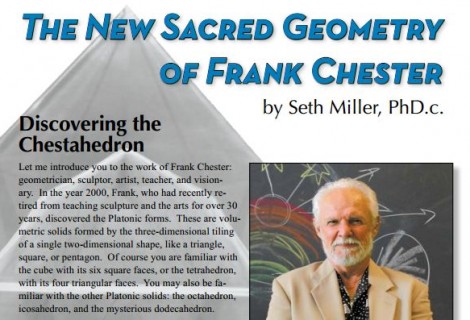An Esoteric Guide to Spencer Brown’s Laws of Form #2
« Previous Page | 1 2 3 4 | View All | Next Page »
So back to the first distinction. What is it? The first possible distinction is that OF distinction, BY an observer which is the same as that distinction. Got that? It should be exquisitely clear that recursion is the nature of the form, and that this could not be otherwise.
So we have a complex unity of the beginning of everything, consisting simultaneously of:
- the fact of distinction as the only possible form for the form
- the fact that the form of the form is recursive (what the form distinguishes is itself)
- the fact that this “itself” is the same as the observer making the distinction.
The esoteric point is that these three aspects are all co-incident: they are the same incident, that of creation (all creation, not just the beginning of the beginning). What I would like to point out is that this recursion has a special character that becomes a key element in understanding all that flows from this beginning, and it has to do with the difference between “levels of order” N and N+1.
But before I use this difference to make a difference, we need a reason to make the difference. In GSB’s words,
LoF p. 1
- There can be no distinction without motive, and there can be no motive unless contents are seen to differ in value.
In other words, there can be no distinction without a motive to distinguish, but there can be no motive except by virtue of a distinction.
Thus (in a circle):
motive–>distinction–>(value)–>motive–>…
The whole is recursive. But here, Ranulph Glanville, President of the American Society for Cybernetics, points out that
“If everything depends on drawing a distinction, how is the mark separated from the value? It must be distinguished. Then, if it is distinguished, it is distinguished by another mark (and value) drawn… ad infinitum. Unless the mark is the value, the value is the mark—ie, unless there is no space (that is to be cleaved), and the distinction drawn distinguishes only itself. (In geometric analogy, instead of the distinction taking the form of a circle, it takes the form of a Möbius strip—that, from above, looks like a circle—which contains no space, has no in and outside, and which, having only one surface, can have its own value on itself: the mark is the value, the value is the mark.)” (Glanville, The Cybernetics of Value and the Value of Cybernetics; The art of Invariance and the Invariance of Art. Et Cetera, p. 3-4).
Perhaps you can thus see the problem which GSB himself did not note. Drawing a distinction is not a singular act; it has at least a dual character, because there is the act of making the distinction (making the mark), and there is the distinction made (the value indicated by the mark). The problem is that GSB’s formulation the first distinction doesn’t distinguish between the mark as an ACT and the mark as a VALUE, but it must somehow if we are to get anywhere. The way to do this successfully is with the implementation the idea of N and N+1 levels of order. Soon.






amazing…like you! thank you for sharing
Seth, this is so cool! Thanks for sharing it with us…..